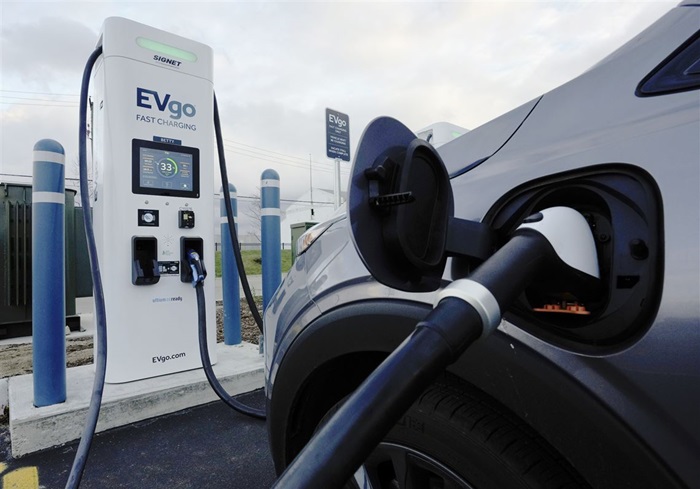Level 1 Charging Stations: A Convenient Option for Everyday Charging
Electric vehicle (EV) ownership is on the rise, and with it comes the need for convenient and accessible charging solutions. Level 1 charging stations, often referred to as “trickle chargers”, offer a convenient and cost-effective way to charge your EV at home or on the go.
These stations, typically connected to standard household outlets, provide a slow but steady charge, making them ideal for overnight charging or topping off your battery during the day.

Level 1 Charging Stations: A Gentle Introduction to EV Charging
A Level 1 charging station isn’t quite a station in the traditional sense. It’s actually the simplest and slowest method for charging your electric vehicle (EV).
Level 1 charging works by connecting the EV’s charging cable to a standard household outlet using a portable charger supplied with the vehicle. Unlike faster charging levels, Level 1 relies on the existing electrical circuit in your home, which is usually 120 volts in North America.
The onboard charger in the EV converts the AC power from the outlet into DC power, which is stored in the vehicle’s battery.

Basic Operation Of Level 1 Charging
- Plug in the Charger: Users simply plug the Level 1 charger into a standard household outlet (120-volt), typically found in garages, driveways, or parking lots.
- Connect to Car: Then, you connect the other end of the charger cable to your EV’s charging port. Level 1 chargers provide relatively slow charging speeds compared to higher-level chargers, typically adding around 2 to 5 miles of range per hour of charging.
- Power Conversion: Your EV’s onboard charger takes the AC (Alternating Current) electricity from the outlet and converts it to DC (Direct Current) for the battery. This conversion process can cause some energy loss.
Benefits of Level 1 Charging:
- Affordability: Level 1 charging requires no additional installation costs, utilizing existing household outlets. This makes it a cost-effective option for EV owners.
- Accessibility: Since Level 1 chargers use standard household outlets, they’re widely available and can be used wherever there’s access to electricity.
- Convenience: Level 1 charging allows EV owners to charge their vehicles at home overnight or during extended parking periods, providing a convenient and reliable charging solution.
Searching for Level 1 Charging Stations in your area
When searching for a Level 1 charging station in your vicinity, it’s important to note the limitations associated with these stations, primarily their reliance on standard electrical outlets.
Limitations of Dedicated Level 1 Charging Stations:
- Slow Charging Speed: Level 1 chargers typically provide the slowest charging rate compared to higher-level charging options like Level 2 or DC fast chargers. They are best suited for overnight charging scenarios when ample time is available.
- Limited Availability: Dedicated Level 1 charging stations may not be as prevalent in public spaces as Level 2 or DC fast chargers. This limitation stems from the need for accessible outlets, which may not always be conveniently located for public use.
- Dependence on Outlets: Level 1 charging stations rely solely on standard electrical outlets (120 volts in North America). While this makes them accessible for home charging, it also means they are susceptible to the availability and reliability of outlets in public locations.
- Compatibility Challenges: Some locations may have outlets that are not compatible with Level 1 charging due to variations in voltage or amperage. This can further restrict the availability of Level 1 charging options in public spaces.

Alternative Methods to Charge Your EV
Public Places with Accessible Outlets: Check your workplace, shopping malls, or familiar locations for accessible outlets you can use for charging.
EV Charging Station Apps: These apps can help you find charging stations, including potentially Level 1 options:
These apps provide real-time information about the availability and compatibility of charging stations in your vicinity, offering a convenient solution for locating Level 1 charging opportunities on the go.
By combining these methods, you should increase your chances of finding suitable charging for your electric vehicle in Hanoi.
Charging Time and Costs
- How long does it take to charge a vehicle at a Level 1 charging station?
- Explain the concept of estimating charging time based on battery capacity and charging rate.
- Briefly mention factors affecting charging time (e.g., battery size, charger amperage).
- What are the costs associated with using a Level 1 charging station?
- Explain that Level 1 charging typically utilizes electricity from your existing plan.
- Briefly compare the cost of Level 1 charging to other charging options (Level 2, Public Stations).
Charging Time and Costs Associated with Level 1 Charging
Charging Time at Level 1 Charging Stations
Level 1 stations are the slowest option for charging your electric vehicle (EV). We can estimate charging time by considering two factors:

- Battery Capacity: Measured in kilowatt-hours (kWh), it represents the total energy stored in your EV’s battery. A larger battery takes longer to charge.
- Charging Rate: Measured in kilowatts (kW), it indicates how much power the charger delivers. Level 1 stations typically offer a low rate (around 1.4 kW).
For example, if your EV has a 60 kWh battery and a Level 1 charger delivers 1.4 kW, a full charge could take roughly 43 hours (60 kWh / 1.4 kW).
Several factors can influence charging time:
- Battery size: As mentioned, bigger batteries take longer to charge.
- Charger amperage: higher amperage (amps) from the charger translates to faster charging. Level 1 stations typically have lower amperage.
- Battery health: Battery degradation over time can slightly decrease charging speed.
- Environmental factors: Extreme temperatures can impact charging efficiency.
What are the costs associated with using a Level 1 charging station?
The beauty of Level 1 charging is that it often comes at a minimal cost. Level 1 stations typically utilize the electricity from your existing home or workplace plan. You simply pay your usual electricity rate.
Briefly compare the cost of Level 1 charging to other charging options
- Level 1 vs. Level 2: Level 2 chargers are significantly faster, often taking just hours instead of days. However, they might require separate payment structures depending on the location (e.g., subscription, per-kWh).
- Level 1 vs. Public Stations: Public charging stations, especially fast chargers, can be even quicker but often have the highest costs per kWh compared to home charging (Level 1 or Level 2).
In summary, Level 1 charging offers a convenient and potentially free way to charge your EV at home or familiar locations with accessible outlets, but at the expense of slow charging speeds.
Level 1 charging, while slow, offers a convenient and accessible way to keep your electric vehicle topped up. Utilizing standard household outlets, it’s ideal for overnight charging at home or during extended stays.
To locate Level 1 charging opportunities near you, consult your vehicle’s navigation system, mobile apps like ChargePoint or PlugShare, or check with local businesses and public institutions. In situations where dedicated Level 1 stations are unavailable, consider alternative options like utilizing adapters for standard outlets or seeking out Level 2 charging stations for a faster charge.
Remember, planning ahead and utilizing available resources can ensure a smooth and convenient charging experience for your electric vehicle.

Henry Michael is a leading expert in EV charging station research, specializing in innovative solutions for electric vehicle infrastructure. With a passion for sustainability and technological advancement, he is dedicated to advancing the accessibility and efficiency of EV charging worldwide.







